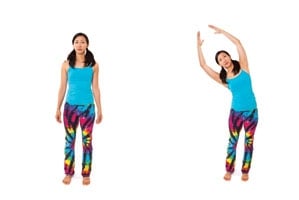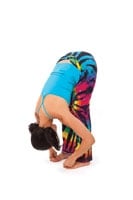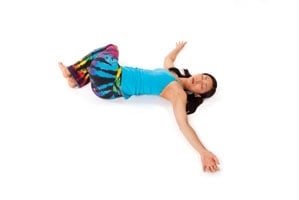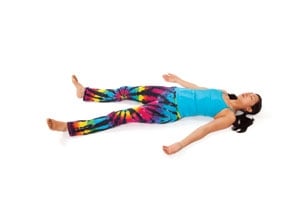
Yoga increases flexibility, but it\’s also beneficial for those with type 2 diabetes. Doing yoga regularly can help reduce blood sugar and cholesterol levels.
Routinely inviting relaxation into our day is important for all of us, particularly when facing emotional or physical challenges. If you’re managing type 2 diabetes, make time to check in with your physical well-being with yoga and mindfulness.
Living an active lifestyle
Australia’s Physical Activity and Sedentary Behaviour Guidelines recommend at least 150 minutes of aerobic exercise per week, plus at least two sessions of resistance exercise per week for adults between the ages of 18and 64.
Yoga does not require much special equipment and, at its core, encourages participants to check in and become in tune with their physical states. Diabetes Australia recommends doing 30 minutes of exercise every day, and yoga is one of the many ways people with diabetes can live an active lifestyle.
Incorporating yoga
It is recommended that you consult your health care practitioner if you are including yoga in your diabetes management plan. People with heart disease or blood pressure concerns should also consult a professional on how to adapt yoga for their needs. Consider working with a yoga therapist or teacher who has experience working with people diagnosed with type 2 diabetes.
While researchers acknowledge that more systematic research is needed, there is recent evidence that regular yoga practice can help people with diabetes reduce fasting glucose (blood sugar) and cholesterol.
Suggested poses
Yoga, meditation and breath work are tools that many people use to tune into their bodies. Try out these yoga postures (asanas) to begin to incorporate yoga into your daily healthy living routine. These postures are great for beginners.
Consider joining a class in your community. It is possible to find classes for beginners.
Always ask your health care practitioner for contraindication information, for more information and before starting any new exercise program.
Mountain Pose (beginning posture)
This pose is the foundation of many yoga postures. You can practise Mountain Pose anywhere you can stand.
- Stand up straight with your legs hip-width apart. Keep your feet parallel to each other.
- Keep your shoulders tracking down your back and lengthen the back of your neck.
- Engage your leg muscles by lifting your kneecaps.
- Keep your throat soft and relax your jaw.
- Feel centred on both feet. You can achieve this by slowly rocking subtly from side to side and front to back. Find where you feel centred on your feet.
- When you feel centred, stop rocking and focus on your breathing.
- Inhale through your nose, filling your lungs from bottom to top.
- Exhale, emptying your lungs.
- Take 5 to 10 breaths in this way, checking in with how your body is feeling.

Nitambasana (side stretch)
This posture brings awareness to the lateral planes of the body and helps to open the shoulders.
- Begin in Mountain Pose, standing with your feet parallel.
- Inhale and lift both arms overhead with the palms facingeach other.
- You can also keep your arms bent, with your hands on your hips, if keeping your hands above your head feels like you are stretching too deeply.
- Gently bend from the waist to the right, feeling a stretch along the left side of your body.
- Focus on keeping your left leg grounded into the earth beneath you.
- Hold your arms on the right and inhale and exhale 1 to 3 times.
- On an inhalation, bring your arms to centre above your head.
- Repeat on the other side.
- You can modify this pose by keeping your hands on your hips.
- Remember not to strain or hold your breath. You should feel a subtle stretch.
Big Toe Pose (forward fold)
The ancient yogis believed this posture helps stimulate the kidneys and improves digestion. People with high bloodpressure should seek advice from a health care practitioner before practising inversions.

- Begin in Mountain Pose.
- On an exhalation, fold forwards from your hips, bringing your head and body in front of you.
- Grasp your big toes with your index and middle fingers. Bend your knees to help you, if needed. As a modification, you can pass a yoga strap under both feet at the big toe mounds and hold onto the strap instead of your toes.
- With an inhalation, lift your body partway out of the pose as if you were going to stand up, and then on an exhalation fold deeper into the pose. You should feel a stretch in your hamstrings.
- Hold for 1 to 2 breaths.
- Come slowly to an upright position to exit the posture on an inhalation.
- Keep your head and neck relaxed throughout the movements.
Reclining Spinal Twist
Yoga twists are thought to help improve digestion.

- Begin by lying down on your back with your legs extended away from you.
- Bend your knees and bring your feet flat to the ground. Then, bring your knees towards your chest.
- Extend your arms out to the sides in a T position.
- Keep your jaw loose and the back of your neck long.
- Use your core to drop your knees to the right on an exhalation. You can squeeze a blanket or block between your thighs ifyou prefer.
- Take 3 to 5 breaths.
- Roll your legs back up to centre and repeat on the other side.
Corpse Pose (final relaxation)
This pose helps calm the body and the mind.

- Lie flat on your back.
- You may want a rolled blanket or bolster under your knees if it feels better for your back. You may also keep your legs bent and your feet flat on the ground, if you prefer.
- Keep your arms relaxed and away from your sides, with the palms facing up.
- Keep your legs resting about 30 centimetres apart.
- Keep your jaw and the muscles around your eyes relaxed.
- Make small adjustments to become as comfortable as you can.
- Close your eyes, breathe into your entire body and focus on relaxing your body.
- Inhale and exhale through your nose.
- Stay here for 5 or more minutes.
Two more mindfulness practices to try
Complete Breath
This breath can be done in the Corpse Pose, in a comfortable seated position or while lying in the comfort of your bed.
- Relax your body and bring your awareness to your breath. You may want to closeyour eyes.
- Exhale as much air out of your lungs as you can.
- Inhale slowly through your nose and feel your lungs filling like a balloon.
- Exhale slowly through your nose, removing all the air from your body.
- Try to find a rhythm to your breathing, possibly inhaling for a count of 5 and exhaling for a count of 5.
- Focus on how your breath is calming your body and mind.
- To begin, try taking 5 breaths in this way. You can also take 1 round (inhaling and exhaling) of the Complete Breath whenever you need to check in and calm your body and mind.
Body Scan
Begin in Corpse Pose, in a comfortable seated position, or while lying in the comfort of your bed.
- Take 5 slow quiet breaths, inhaling through your nose and exhaling through your mouth.
- Scan your body for tension, beginning with your toes and feet.
- Invite your toes and feet to relax. Take 3 or more breaths focusing on relaxing your toes and feet.
- Move on to your legs, knees, hips, back, chest, hands, arms, shoulders, neck, jaw, face and head. Invite each part of your body to relax and breathe a few times, focusing on each body part.
- Set aside at least 5 to 10 minutes to scan your body and invite relaxation into your body and mind.


